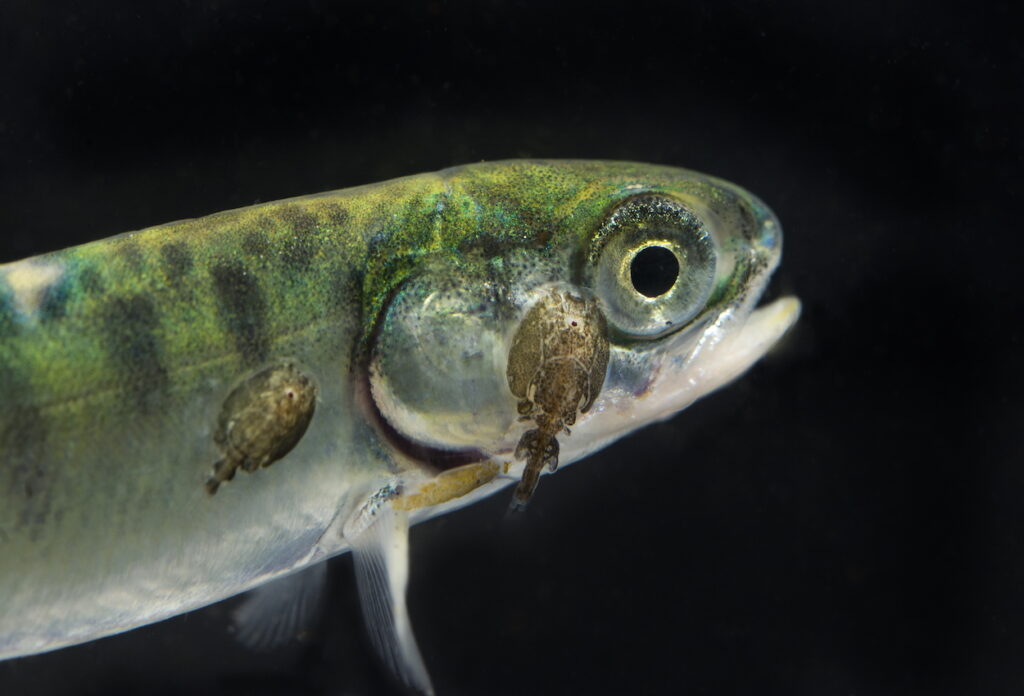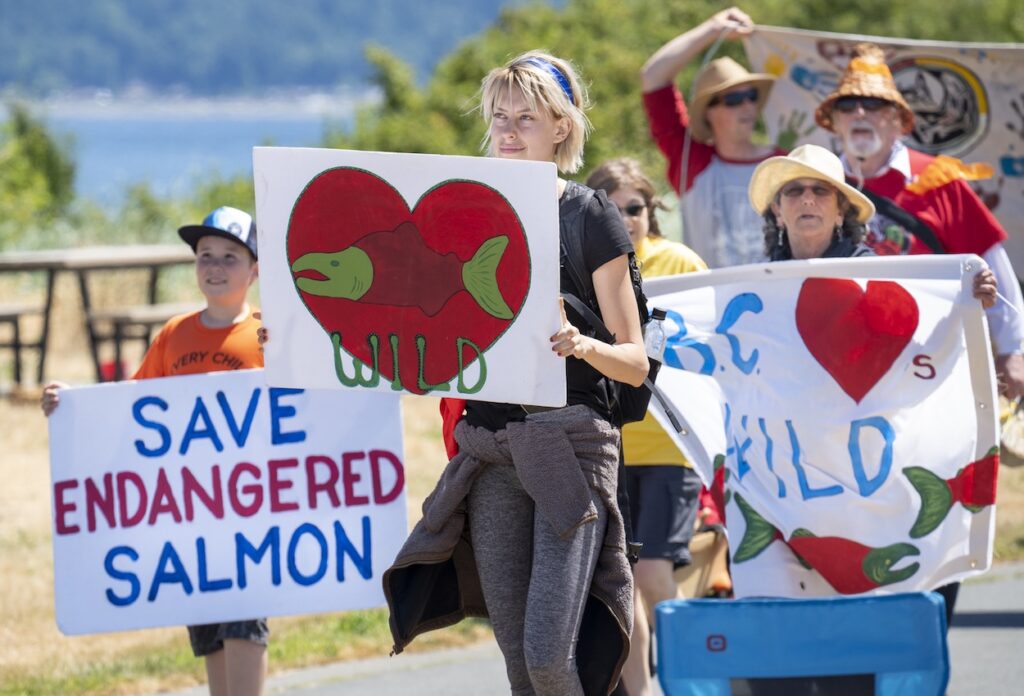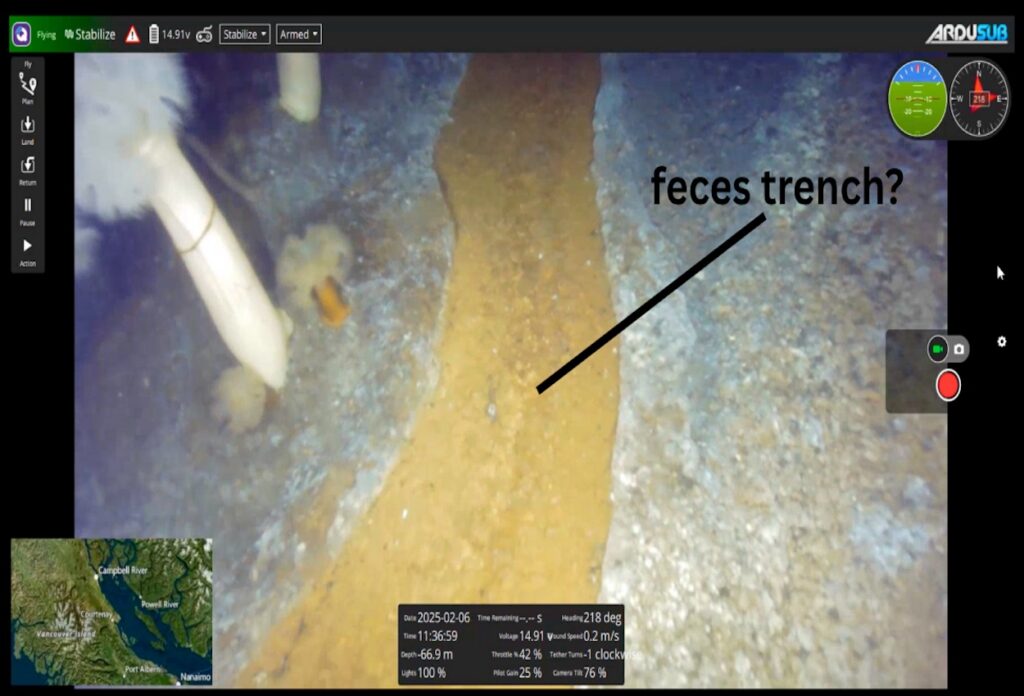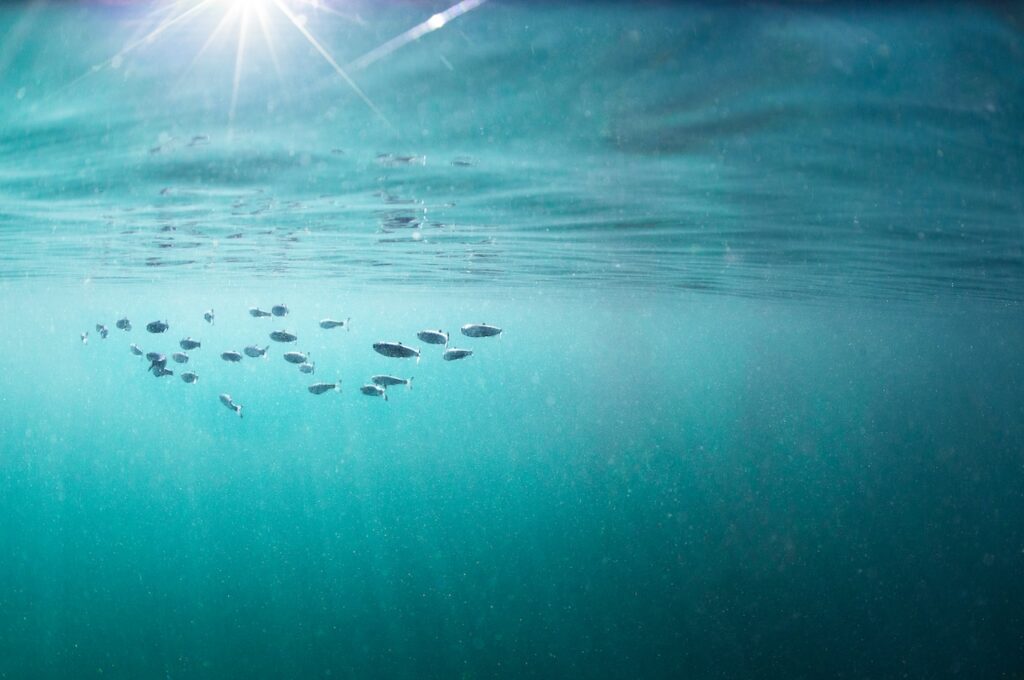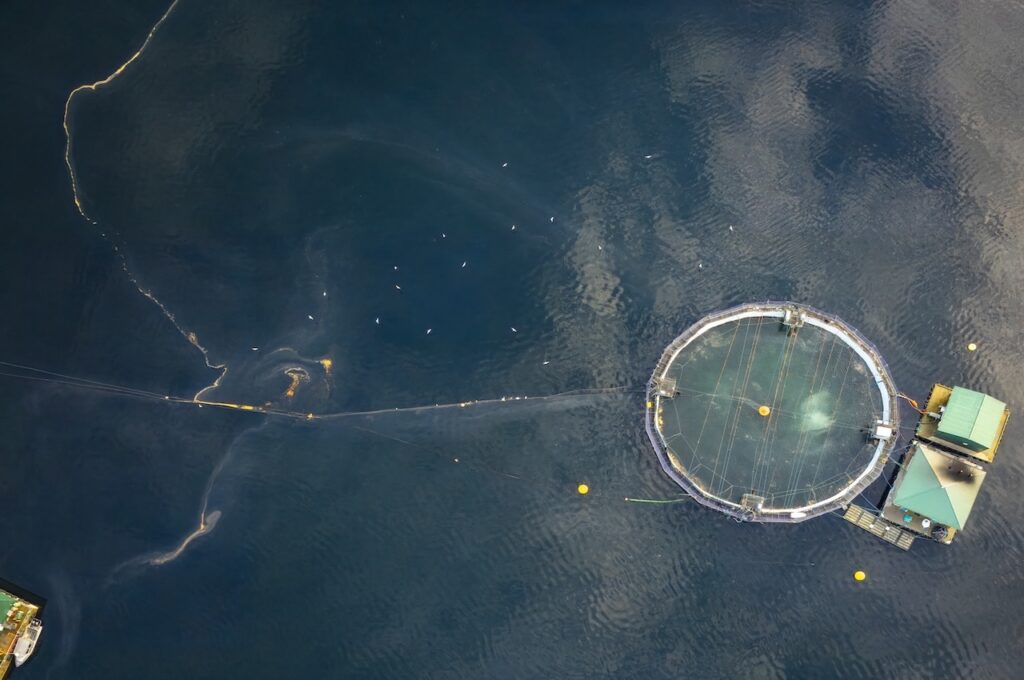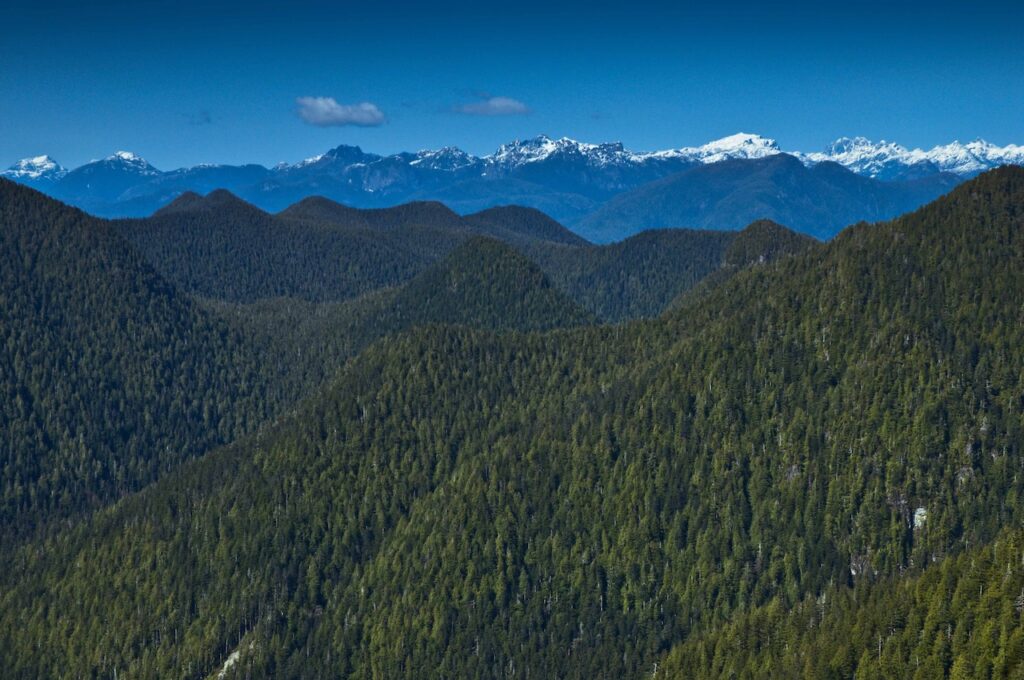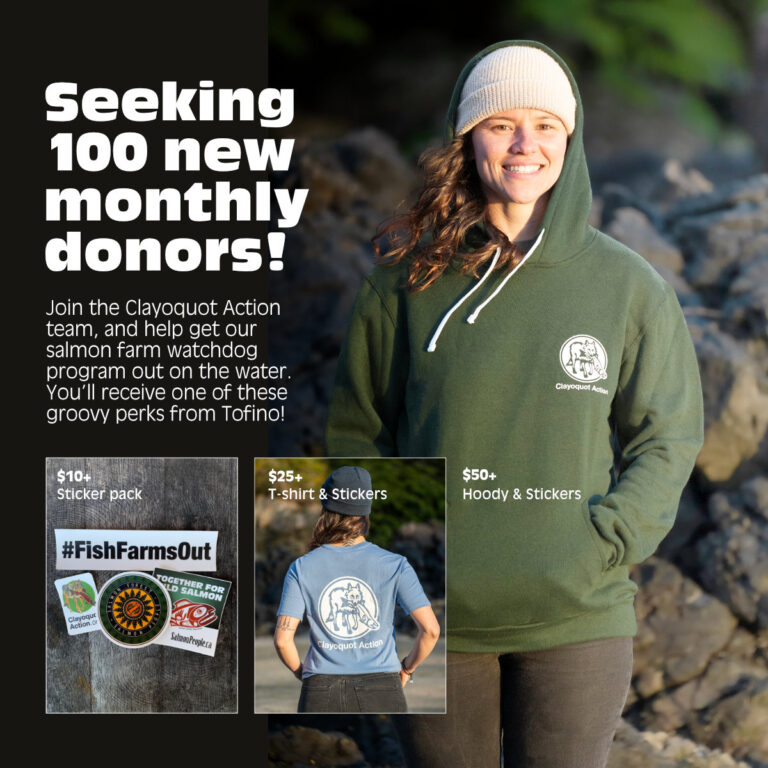“Massive Area” Under Closed Containment Salmon Farm “Covered 100% with Feces and Fish Feed”—Government Records Reveal
A recent government inspection has uncovered shocking levels of pollution beneath an experimental salmon farm off the coast of Tofino, British Columbia. Underwater footage and inspection records reveal that the seafloor beneath Cermaq Canada’s semi-closed containment system at Millar Channel is completely blanketed in fish feces and uneaten feed—raising serious concerns about the future of in-ocean aquaculture in BC.
Clayoquot Action crew discovered signs of a die-off at Cermaq’s SCCS
In November 2024, Clayoquot Action set out on a CSI (Clayoquot Salmon Investigation) mission to check on Cermaq’s fish farms in Clayoquot Sound, north of Tofino. As the team approached Cermaq’s experimental semi-closed containment system (SCCS), the stench of rotting fish indicated that something was going wrong. Then the team saw it—a sheen of fish oil with bits of rotting tissue, both inside and outside of the pen.
Immediately, we reported to Department of Fisheries (DFO) and received two responses to this incident which did not line up with each other—and neither really explained what happened. We called for an investigation.
A “Massive Area” of pollution
The alarming findings come from a DFO report obtained by Watershed Watch Society through an Access to Information request.
Feb 6, 2025
“We flew an ROV (remotely operated vehicle) transect below the SCCS (semi-closed containment fish farm) feed pipe on bottom, and shortly into the transect noticed a “trench” that appeared to be approximately 30 cm wide. The trench appeared to be dug out of the mud bottom and it was full of fish feces. We followed the trench with the ROV for about 5-6 minutes with no end observed.”
“We followed the trench the opposite direction and went under the SCCS. The trench led to a massive area below the SCCS covered 100% with feces and fish feed.”
“We flew the ROV up to a few of the ports along the bottom of the SCCS and observed a significant amount of feed and feces coming out of the outflow ports”
More red flags: Wildlife intrusion and antibiotic use
Another inspection report noted that at the semi-closed containment system “… at Millar Channel, one sea lion was able to gain access to the bottom chamber of the SCCS. Divers investigated and believed to have released the sea lion.” This breach was a threat both to the animal and the integrity of the containment system.
Even more concerning: the salmon inside the farm had been treated with the antibiotic florfenicol at least seven times, including as recently as February. While the specific health issues remain redacted, the repeated use of antibiotics in open-water settings can contribute to antibiotic resistance and contaminate the surrounding ecosystem. No public health advisories have been issued for seafood harvested near the site.
Federal transition away from open-net pens
The federal government has pledged to phase out open-net pen salmon farms in BC by July 1, 2029. As a part of this transition, the government is considering various alternatives—including land-based recirculating systems and in-water technologies like Cermaq’s semi-closed containment system.
With salmon stocks in British Columbia at all-time historic lows, this is not the time to tinker with experimental systems which can still harm wild salmon and pollute the marine environment. It’s time for this industry to grow up and get out of the ocean.
What comes next?
With the clock ticking on open-net pen farming, the federal Transition Task Force has a critical job ahead. As Stan Proboszcz, Senior Science and Policy Analyst at Watershed Watch, put it: “With the federal government about to release its BC fish farm transition plan and considering alternatives to open-net pens, these incidents make one thing clear: in-water fish farming isn’t the solution.”
Transparency and accountability must guide this transition. Experimental farms like the one at Millar Channel must be rigorously evaluated, and public concerns about marine pollution, wildlife impacts, and food safety must be taken seriously.
If BC is to protect its dwindling wild salmon populations and restore the health of its coastal waters, the aquaculture industry must embrace truly sustainable solutions — and that means moving out of the ocean entirely and as soon as possible.
Learn more about the incident and Clayoquot Action’s findings here: Cermaq’s doomed experiment
Read more about What Factory Fish Farms Don’t Want You to See Underwater HERE
Dan Lewis is Executive Director of Clayoquot Action.
